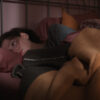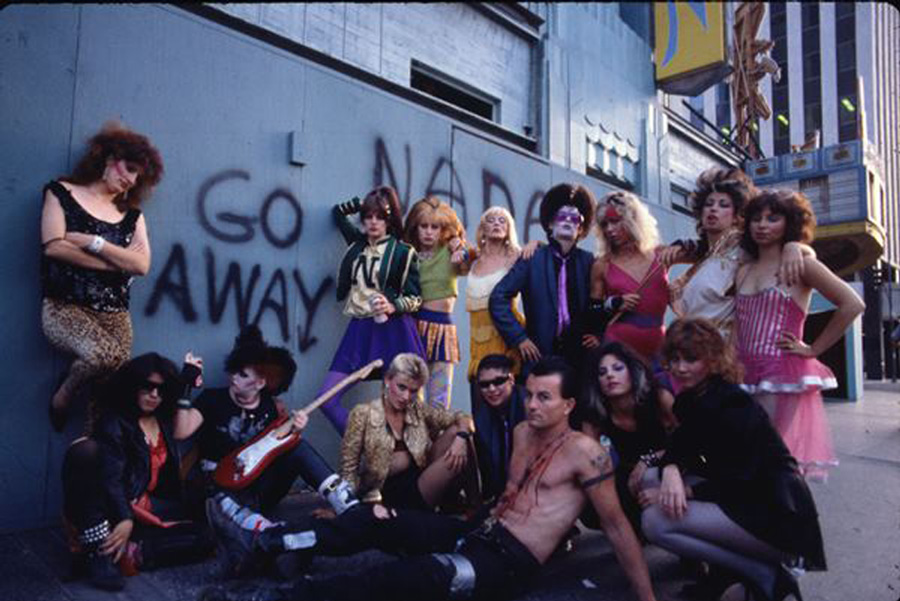Around this time every few years, Allan Arkush gets a call about putting his 1983 film “Get Crazy” out on home video, usually from someone who’s just seen it at a repertory screening like the one that’s about to happen on January 2nd at the New Beverly in Los Angeles. With no competition as the most energetic New Year’s Eve movie ever made, and a rebellious rival to the throne held by such holiday staples as “The Apartment” and “When Harry Met Sally” with no qualifiers whatsoever, the director’s unofficial follow-up to his classic “Rock ’N’ Roll High School” might be thought to be tied up with music rights, given a soundtrack that features a theme song from Sparks, Fear, the Ramones and Lou Reed, among others, but the path to being more widely available than year-end screenings on the coasts actually had to do with the fact that the film elements had no sound at all.
“It came out on VHS in mono — very fuzzy — and then I get a call about the DVD and they say, ‘Well, we have a problem. Do you remember where you mixed it? We can’t find any of the sound?” Arkush recalled recently at a screening at the Los Feliz 3 put on by Cinematic Void’s James Branscome to celebrate the release of the long-requested Blu-ray. “It was Dolby Surround, and the company [that bought the rights to the film] had been sold two or three times, they lost track of where [the elements] were, and then they couldn’t find the negative.”
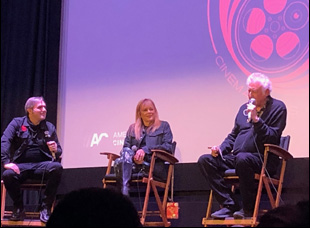
For Arkush, the missing print didn’t only mean there was nothing to show for the years he put into making “Get Crazy,” but a formative period in his life, reflected in the final minutes of the film where as “Auld Lang Syne” plays, he can be seen in the balcony of the Wiltern Theater in L.A. presiding over madness in a T-shirt from Fillmore East, the New York concert hall where he worked on the weekends while he attended film school at NYU in the late 1960s. Rubbing shoulders with the rising rock acts of the era, he had a few stories to tell as well as his compatriot Danny Opatoshu, who went on to become a roadie for Bob Dylan, and after the professional disappointment of the ill-fated Andy Kaufman comedy “Heartbeeps,” Arkush was eager to make something more personal, enlisting Opatoshu to fashion a coming-of-age tale with the verve of the 1941 comedy “Hellzapoppin’” out of their shared experiences.
The film was greenlit on the condition that Arkush would bring it into the present day and add more jokes and nudity, in line with recent hits such as “Airplane” and “Porky’s” and not the most difficult demands for a director who had graduated from the Roger Corman school of filmmaking. (“At that point, in all fairness, my career was nowhere and I was really into this movie and I loved the music and so forth and Danny wished me well and we added two more writers and we started to go make the movie,” Arkush said.)
If Arkush had to make a few concessions in order to lift “Get Crazy” off the ground, he wasn’t going to make them once there was a serious lead on the materials that could lead to a proper Blu-ray. Kino Lorber had located a suitable copy of the film at MGM, which has been uncovering elements as they’ve been cleaning up their catalog for streaming and the director took the unusual step of offering to produce and direct special features to accompany the film himself, quite literally getting the band back together as he reached out to Kent Beyda, an original editor on the film and Mark Helfrich, an assistant editor on “Rock ’n’ Roll High School, to cut together a making-of documentary (“The Afterparty”) and took advantage of people staying home during the ongoing pandemic to set up Zoom interviews with nearly everyone who worked on it, from stars Malcolm McDowell, Daniel Stern and Gail Edwards to grips, and even coaxed Lori Eastside, who was enlisted initially as a choreographer for the film and then became the lead singer of the ferocious faux grrl group the Nada Band, to get the gang back for an encore performance. (One notable absence is Anna Bjorn, a former Miss Universe contestant from Iceland who played McDowell’s girlfriend and Arkush learned had been placed in witness protection as a former neighbor of Whitey Bulger in Santa Monica.)
“If you watch the Blu-ray extras, how everyone talks about this movie and the experience of something that happened 38 years ago to them in a theater and a parking lot on the corner of Western and Wilshire and the passion that they talk about the experience, it just made all the pain and the negativity I went through on the movie [not matter],” Arkush said. “My whole head has turned around on what we accomplished.”
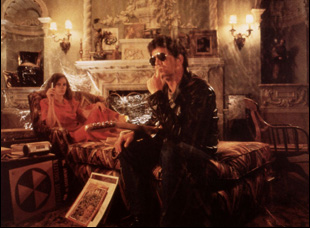
Remarkably, the Wiltern had been set for a renovation for some time, leaving the venue empty for Arkush and company to essentially use it as a soundstage, with none of the usual concerns that come with shooting on location and room to fill the place with 700 to 800 extras as concertgoers, some of whom secretly snuck upstairs to live in the building during the month-long shoot. With producer Hunt Lowry, Arkush not only had the run of the place inside, but shut down Wilshire and Western – unthinkable in this day and age – to land a helicopter in the middle of the street and stage wild car chases while offering a similar sense of danger with each one of the musical numbers. He was referred to first assistant director Cliff Coleman by John Landis, who had just worked with him to handle the crowd scenes in “Animal House,” and after their first conversation concerned his work on “The Wild Bunch,” Arkush needed no further credentials to know he was going to be able to pull off what he wanted, which would come to include jumping off the balcony into the orchestra section below.
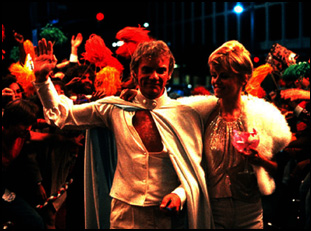
As it would turn out, the stage dive was the least harrowing moments of the “Get Crazy” experience when the film’s financing structure had all but doomed it to failure. In spite of originally envisioning a more serious and nostalgic film, Arkush embraced the more frenetic contemporary comedy he was asked to make, creating a relentless Marx Brothers-esque farce to show just how much Stern’s overwhelmed stage manager had his hands full. The editing room was full of future stars from Beyda, who would go on to cut “This is Spinal Tap” and “Innerspace,” to Jablow, who would work on “Throw Momma from the Train” and “Can’t Hardly Wait,” and even future “Terminator” editor Mark Goldblatt, who was brought in as a supervising editor. Additionally Arkush had a secret weapon in Ralph Rosenblum, the editor on “The Producers” and “Annie Hall” who advised on the film after the director became a disciple of his book “When the Shooting Stops…the Cutting Begins.” (“He watched our cuts and because of the intensity of the movie, we thought we could get really lost in telling the story, but Ralph was like our anchor and he really guided us through it, says Arkush.) However, the film wouldn’t test well and rather than there being any acrimonious battle over a cut, the film was sold off to a tax shelter group that had no incentive in looking to make a profit at the box office when their pockets were already lined.
“They decided to dump the movie and put it out for one week and pulled it from theaters,” Arkush said, with the film inauspiciously released in six months ahead of New Year’s with the tag line “Last Chance to Party This Summer!” “They actually set up critics screenings and cancelled them when the critics showed up, so we got no reviews [as the film was opening], but then when we got reviews, we got good reviews, but by then you couldn’t see it.”
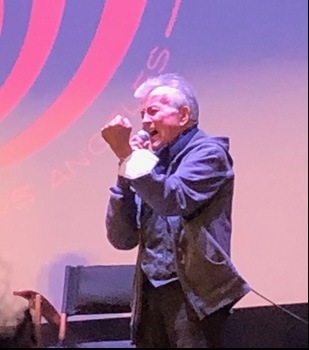
Although getting everyone in the same room then was out of the question, Arkush made how-to videos for everyone to properly frame their shots on their iPhone while playing their instruments and had Eastside come to his house to dance around his pool for what would become his favorite part of the new disc. It hadn’t been easy to set up, but then again, nothing for “Get Crazy” did, and just like in one of his movies, the rebellious ones often up being victorious.
“As dated as some of it is, it’s still funny and it’s still a dumb rock and roll movie and that’s what I was aspiring to,” said Arkush. “[With] the long strange trip that I’ve been on with this movie, having it come out is really nice.”


